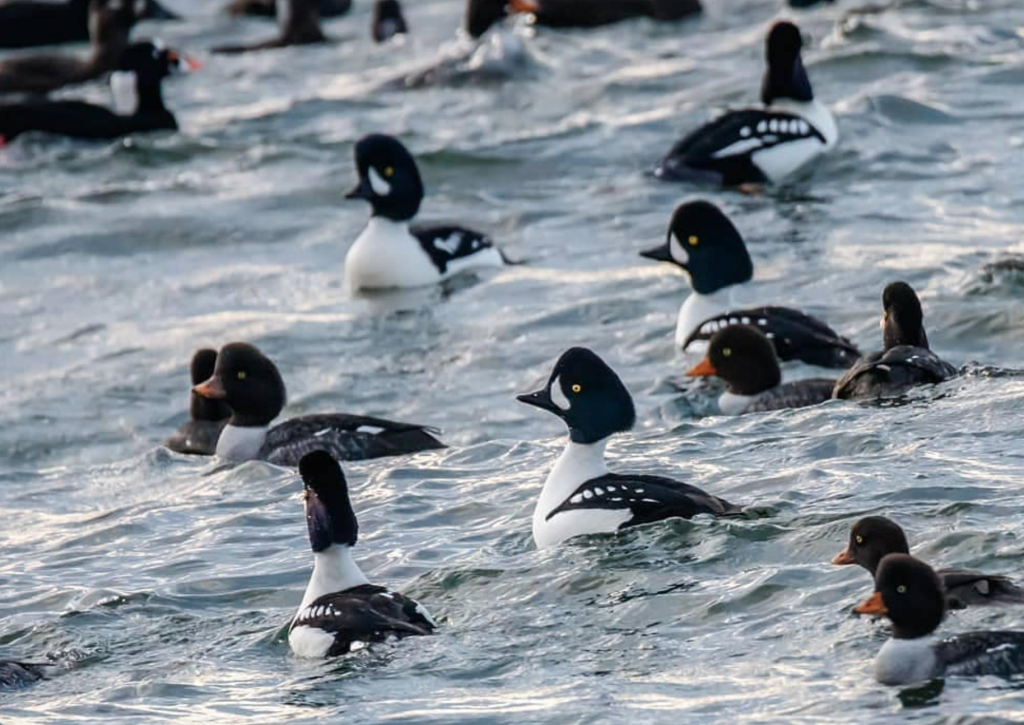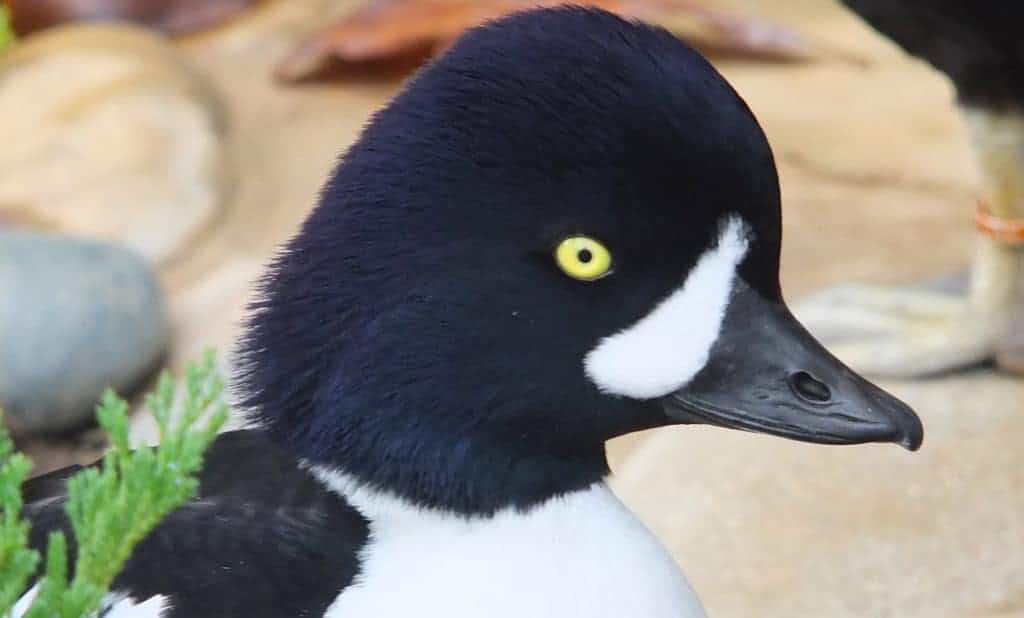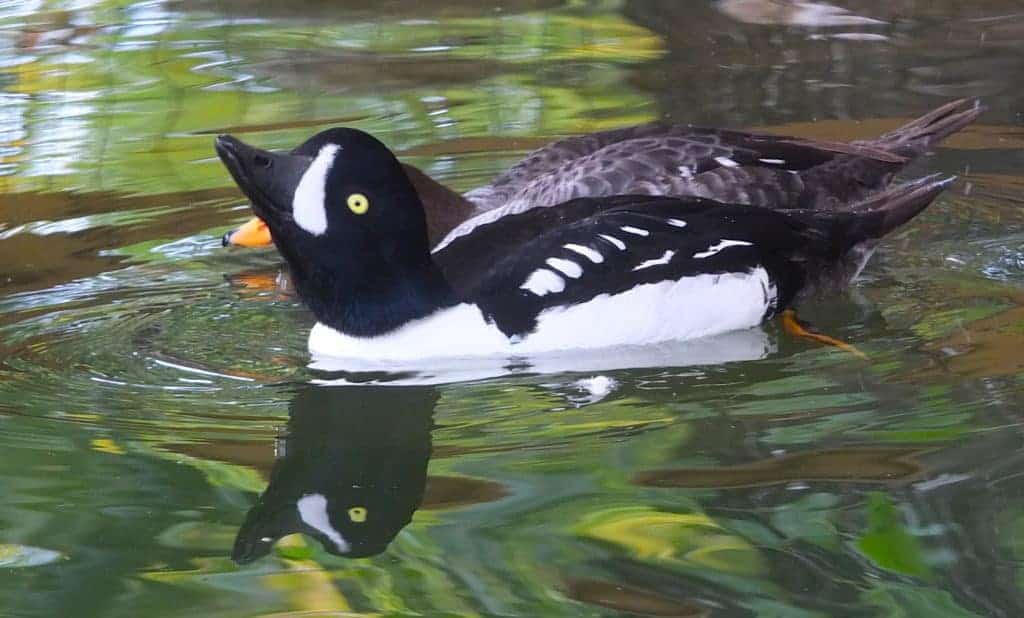Barrow’s Goldeneye


Sometimes reluctant to breed, these sea ducks are far less common in our collections than our European subspecies of Common Goldeneye B. c. clangula. Birds are mature at two years old. The most successful breeders are those with fresh, clear, cool water.
Bucephala islandica
First described in 1789 by Gmelin, the birds were from Iceland, giving this goldeneye its specific name. However, more significant numbers of the handsome Barrow’s Goldeneye are to be found in northern North America. They breed from South Alaska to Northern California and Wyoming; Labrador and the St Lawrence River, in eastern Canada and Iceland.
They do hybridise readily in captivity, but also occasionally in the wild, where their range overlaps with the American Goldeneye Bucephala clangula americana. The characteristic tear-shaped white crescent is the most notable identification feature, along with a blacker wing than Common Goldeneye.
Barrow’s Goldeneyes’ diet is mainly animal; aquatic invertebrates (molluscs, crustaceans, worms, insects and their larvae), amphibians, small fish and their spawn. Floating sea duck pellets should be supplemented with live food for best results.

Barrow’s Goldeneyes will take readily to elevated nest boxes, but also find crevices in rocks and hunker down in vegetation if these give privacy and seclusion. The female incubates 8–11 pale green, blue-green or greyish eggs for an average of 28–30 days. She will defend her brood well. Whether or not she will take other lone ducklings into her brood is variable. Hand-rearing is best done by experienced breeders as the ducklings are easily stressed.